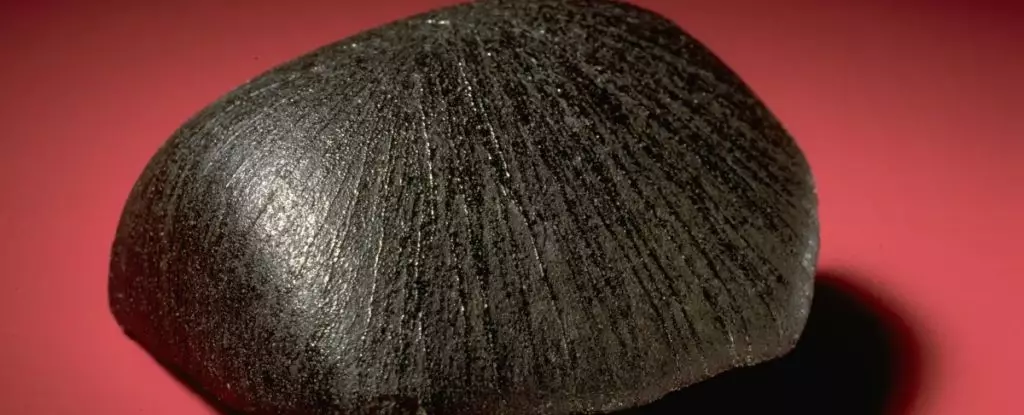Recent explorations of Mars have gradually shifted our understanding of its geological history from a barren landscape to one that was once vibrant with liquid water. The exploration of various Martian features, such as river valleys, lakebeds, and sedimentary deposits, indicates that a time existed when Mars was awash with lakes and possibly oceans. However, despite these compelling markers, deciphering the precise timeline and mechanisms behind the disappearance of water has remained a complex puzzle for researchers. Recent findings from the Lafayette Meteorite have provided a significant breakthrough, illuminating how Mars could have maintained conditions favorable for liquid water far more recently than previously thought.
The Lafayette Meteorite, ejected from Mars approximately 11 million years ago, has recently garnered attention due to the discoveries encapsulated within its mineral structure. Analysis by a team of geochemists, including Marissa Tremblay from Purdue University, has revealed critical information suggesting that liquid water may have existed on Mars as recently as 742 million years ago. The meteorite contains iddingsite, formed through the interactions of volcanic basalt with liquid water—a direct indication that water was present in Martian history.
In unraveling this meteorite’s secrets, scientists have leveraged advanced techniques like radiometric dating. The dating was conducted through isotopic analysis of argon—specifically, the isotopes argon-39 and argon-40. This method provides insight into when liquid water was present and allowed scientists to confirm that the minerals in the Lafayette Meteorite formed in conditions involving liquid water without ambiguity.
Dating minerals from extraterrestrial sources presents unique challenges, especially when geological processes and impacts from space can obscure precise timelines. The researchers needed to account for potential alterations caused by the meteorite’s journey—from ejection during a Mars impact event, transit through the solar system, to its fiery re-entry into Earth’s atmosphere. Each of these stages could theoretically affect the mineralization and apparent age of samples.
Despite these complexities, the team demonstrated their methodologies successfully filtered out those variables, ensuring that the dating results reflect the true history of aqueous alteration in the meteorite. This level of precision is crucial, not just for understanding Mars but also for refining broader planetary science methodologies.
The significance of the findings extends beyond merely cataloging another date in Martian history. Establishing that liquid water was present during a period of intense volcanic activity on the Martian surface raises questions about the planet’s climatic evolution. The correlation of moisture with volcanic activity suggests a link between geological processes and the transient availability of water, a factor that enhances the understanding of Mars as a dynamic system rather than a static desert.
Moreover, as scientists continue to explore Mars with instruments like the InSight lander, it’s becoming increasingly evident that the planet still harbors geophysical activities beneath its surface. These revelations challenge the preconceived notion of Mars as a quiet celestial body and open the door to further inquiries about current and ancient water cycles on the planet.
The methodologies established through this research have implications beyond Mars, presenting an opportunity to redefine how we date geological events across various planetary bodies. By perfecting techniques to date the presence of liquid water, scientists can apply these findings to meteorites from other celestial bodies, shedding light on their historical interactions with water as well.
The understanding of adequately dating aqueous minerals not only informs the chronological framework for Mars but also ties into one of the most significant questions in planetary science: how Earth acquired its water. Insights gleaned from Martian meteorites can provide clues that might help unlock this mystery, fostering a greater understanding of planetary evolution across the solar system.
The revelations from the Lafayette Meteorite underscore a broader narrative about the existing potential for liquid water on Mars, its geological history, and its ongoing processes. As we continue to refine our analytical techniques and gather data from Mars, we inch closer to comprehensively understanding not just where water once existed but also where it may still persist today. The exploration of this red planet is filled with mystery, and innovative research like this paves the way for future discoveries that could reshape our understanding of life’s potential in the cosmos.


Leave a Reply